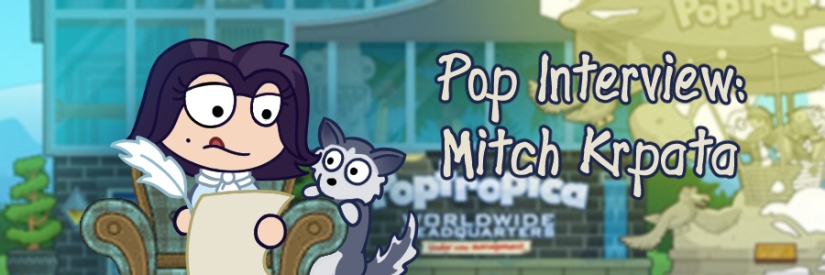
You asked, and here are your answers, Poptropicans! The PHB recently got in touch with former Pop Creator Mitch Krpata, aka Captain Crawfish, with your questions about Poptropica’s development pre-2018. And Mitch kindly responded to them all! Take it away, captain…
📖 Graphic Novels & Overarching Story 🌏
How did you decide on Octavian’s fate in the graphic novels?
I never thought of Octavian as a “bad guy,” necessarily. He’s driven to do what he thinks is right and believes that the ends justify the means. In the last book, especially, I was trying to set up two competing world views: the kids learn to accept things as they are, while Octavian keeps resisting and trying to make things perfect. The point, as the curator says, is that Octavian will never find peace until he can accept that the struggle is part of life, because no timeline will ever be perfect. So it didn’t make sense to me to kill him off or have him renounce his ways. In a sense, his fate is even worse: there are millions of Octavians out there in millions of timelines, and he’s suffering in all of them.
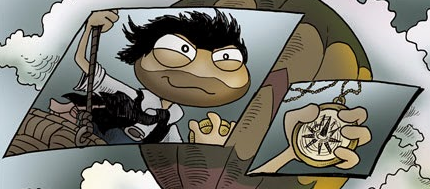
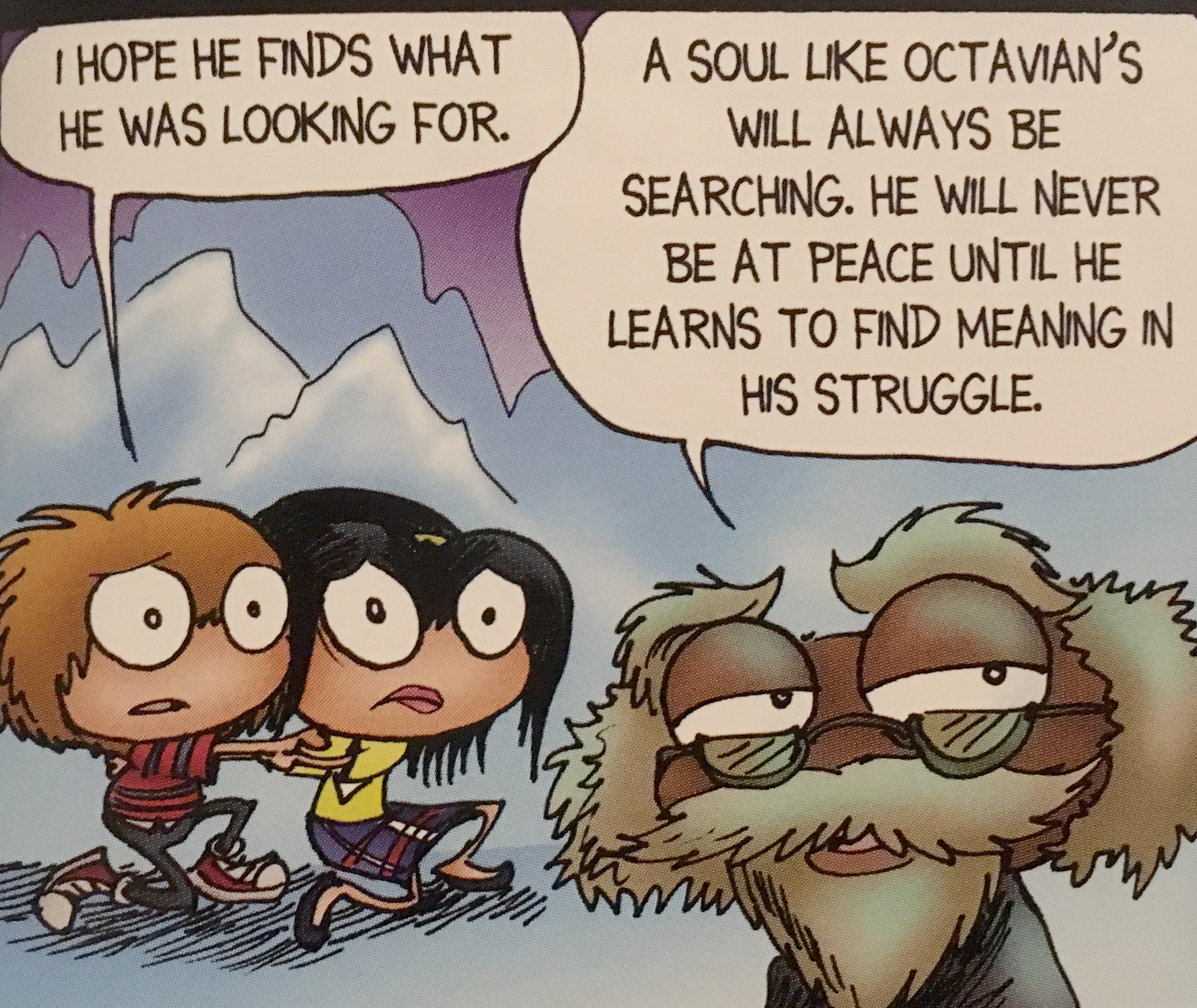
How has your approach to worldbuilding has changed over the years, and how did you came up with the overarching framework for Poptropica’s origins?
I’ll go into more detail in a later question, but the graphic novel framework came from a lot of discussions mostly between me, Jeff Kinney, and Jess Brallier. We were trying to think of a way to unify the islands of Poptropica in a way that we hadn’t done in the game. As to the first part of the question, I always thought of each island in a game as a world unto itself. In my mind we were starting from zero every time. The question was what we wanted to accomplish within a particular island. A lot of the time what motivated us was simply trying to do something different than the last time. If we had just done a plot-heavy island, we might do something more based around minigames next. If we had done something really silly and fantastical, we might be more serious the next time. We just wanted to keep it fresh.
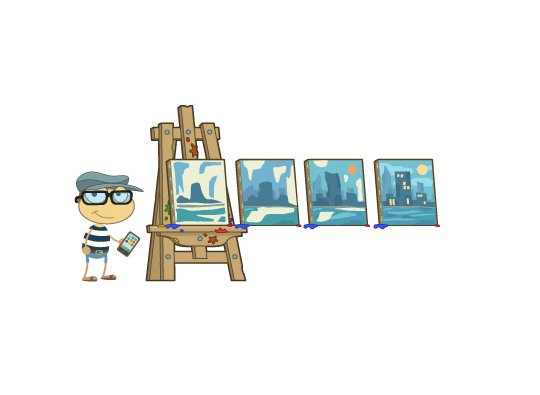
There seem to be some differences between how the game and the graphic novels approach how the world of Poptropica works, such as Poptropica being presented as a group of islands in the comics while it’s a whole planet in the game. Are they intended to connect or was there simply a different approach in each medium?
Yes, major differences. Mainly that was about telling stories that are most appropriate for the medium. Because the player is the hero of the game, we wanted to give them wide latitude to customize their avatar and travel far and wide in their adventures. In the graphic novels we needed to create specific characters to be the heroes. That led to decisions like having the kids transported from the world they recognize and needing to find their way back home.
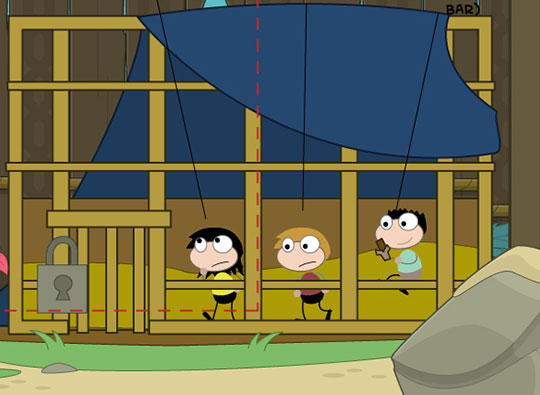
Although the graphic novels touch on this, can you elaborate on how exactly the islands are connected? (We know they share the same universe because of Super Villain Island, although paradoxically the 19th-century Mystery Train Island is being destroyed in the present day.) While many clearly take place on Earth, others, most notably Astro-Knights, have a “Planet Poptropica.” What planet do the islands take place on? What’s really going on?
Right, so in the graphic novels there is essentially this warp in the fabric of space-time that’s localized to one area of the planet. The islands move in and out of view — it’s like a kaleidoscope. In the game… well, there was never any plan. In the very beginning we didn’t even intend there to be islands. The original design called for an ever-expanding series of interconnected playable areas. The “island” concept came as a justification for drawing boundaries around Early Poptropica. It helped in a lot of ways, but that’s also why the moon in Astro-Knights is completely different from the moon in Lunar Colony. With a couple of exceptions, there’s really no connective tissue between any two islands.
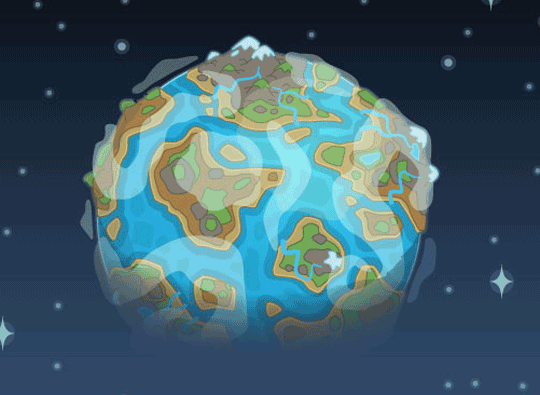
🏝 Island Stories 🏝
What was your favorite island and why?
I don’t have a single favorite. There are a lot of islands that I think do one thing or another better than the rest. I always really liked the world-building in Wild West Island. It felt like a real place. Lunar Colony was probably my favorite story, and Salerno one of my favorite characters. I love Mocktropica because I felt like we really got away with something on that one. When we started experimenting with episodic islands, there was some skepticism among the fans, but I think both Survival and PoptropiCon wound up being some of our best work overall, considering the quality of the story, art, and gameplay.
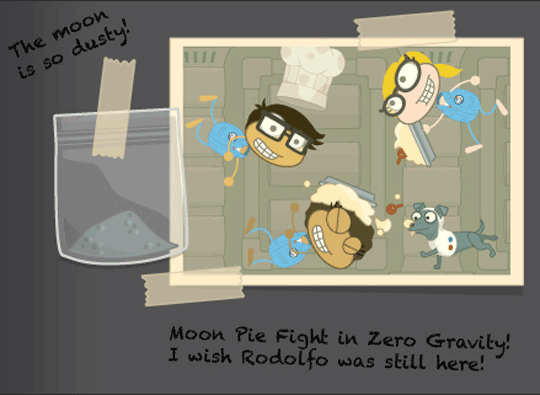
You know how I said you would regret allowing questions from the biggest Astro-Knights fan? Yeah, now’s the time. Why were Mordred and the Binary Bard combined into the same character? How did he survive all those 20 years in space? What else can you tell us about the island’s development that didn’t end up in the final product?
I hate to let you down, but I didn’t work on Astro-Knights! I helped with the initial conception and development of Poptropica, including laying out some of Early Poptropica. But it was so successful right away that it needed a dedicated staff, so I went back to my other work and didn’t come back to working on Poptropica until… early 2010, I think. I have played Astro-Knights many times, but I have no real insights into its development. (But isn’t it weird how many early Pop villains ended up marooned in outer space?)
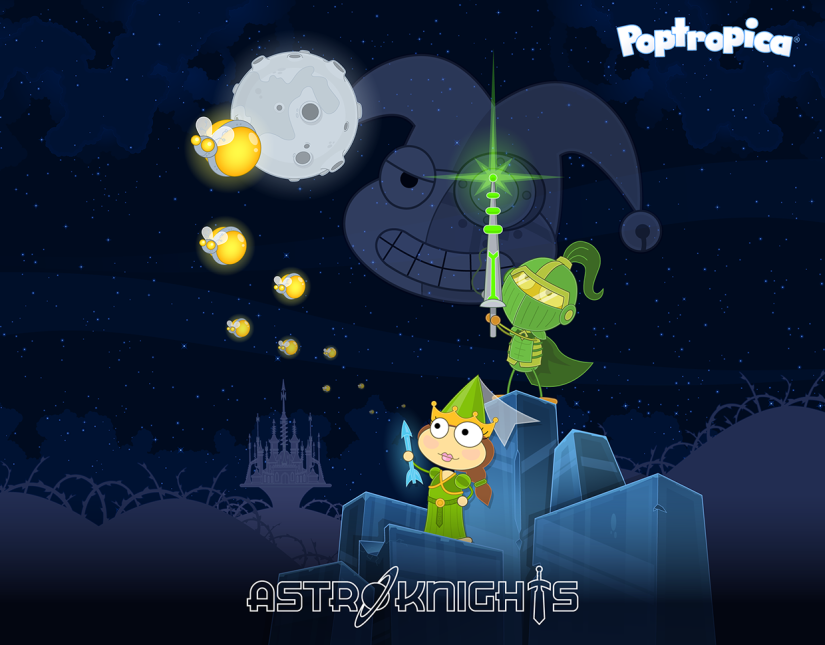
Monster Carnival ends with the traumatized outcast-turned-revenge-seeker Ringmaster Raven once again ostracized by the townsfolk, his childhood bullies. Why such a tragic ending for Raven and the people?
Monster Carnival was a hard one to write. There was a lot of pressure to come up with something spectacular, and while there’s a lot about it that I like, I don’t think the script ultimately ended up where I would have wanted it. I will say that the idea behind Ringmaster Raven’s comeuppance was to thwart the expectation of what usually happens in kids’ stories. It always turns out that the villain was just misunderstood, or lonely, and everyone agrees to let bygones be bygones and now they’re all friends. I kind of wanted to turn that on its head and say, no, this guy is actually pure evil and there’s no putting the toothpaste back in the tube.
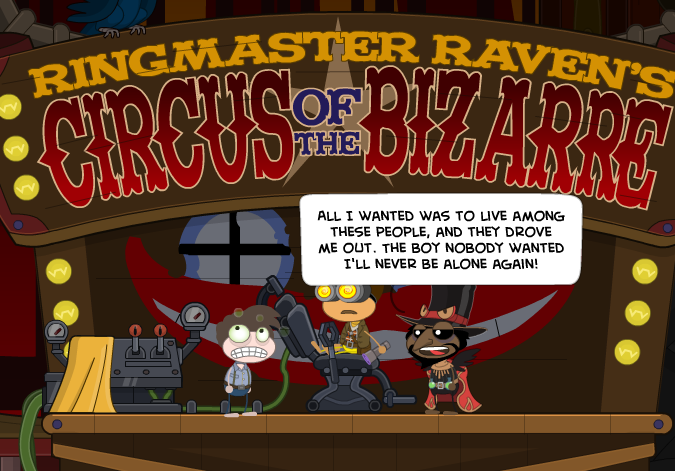
Whose idea was it to put Napoleon Dynamite in Mocktropica?
Haha, I’m about 90% sure I remember which designer that was in particular. Basically every scene in Poptropica would have some number of characters that didn’t really factor into the story but were there to bring life to the setting. If I remember correctly, that character was in the classroom, so the script would have just said something like “several students sit at their desks” and the artist designing the scene would have put some looks together and shared out a character sheet. That’s one of the more obvious examples but there are a lot of NPCs in Poptropica that bear a resemblance both to real and fictional people.
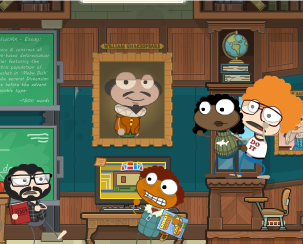
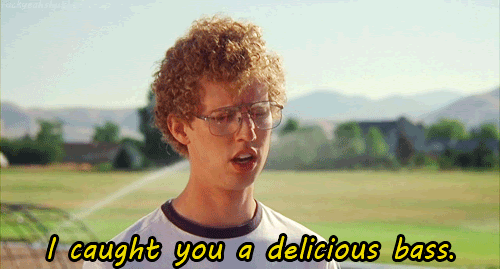
💙 Fandom & Random 📘
What are your opinions on the Poptropica fandom community (including, ahem, our random headcanons and fanfics)?
I love it! You are the reason Poptropica is still here almost 15 years later. We always said we hoped to inspire the next generation of storytellers and it’s incredible to see that in action.
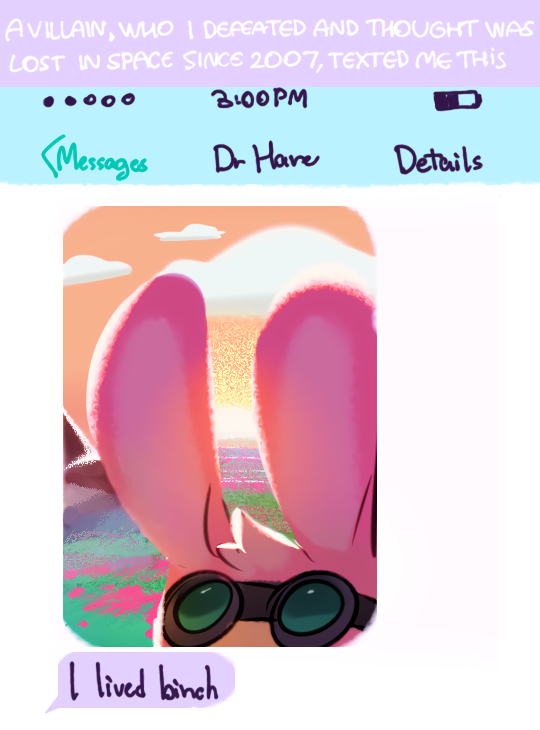
What can you share, if anything, about the Poptropica animated series that was in the works? Story, characters, art style? Were there plans for appearances from notable characters from the game, or would it be a separate entity with new characters and places, like the Poptropica comics?
This was actually the basis for what became the graphic novels. We were trying to get a deal for an animated series and got as far as making a series bible and a pilot script. (We did a reading of the script that you’ve probably seen pictures of.) I am not sure how close we ever got to a deal, but ultimately it fell through and we pitched it as a graphic novel instead. Book 1, Mystery of the Map, is very similar to the pilot for the animated series, but the story diverges significantly after that. Again, it’s about telling the right story for the medium — the animated series was going to be more episodic, mostly spending each episode on a different island while inching the main story forward. With the graphic novels, we had a four-book deal and had to tell a complete story that way.
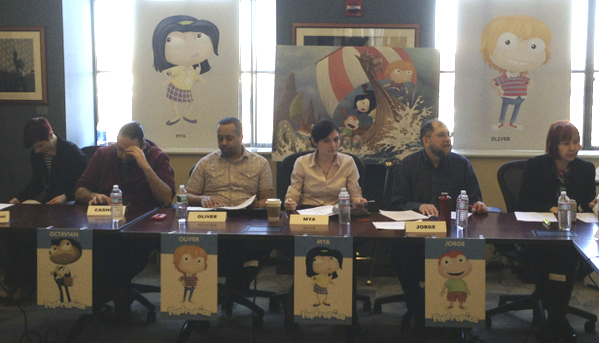
What are some favorite lines of dialogue you’ve written in the game?
I always loved when the queen in Crisis Caverns said “How could the mole people have been so blind?” It still cracks me up. I don’t think anybody else thought it was funny.
A lot of my dialogue was ironic, self-aware, or broke the fourth wall. Any time a character makes a comment that makes it seem like they know they’re in a video game, that was probably me.
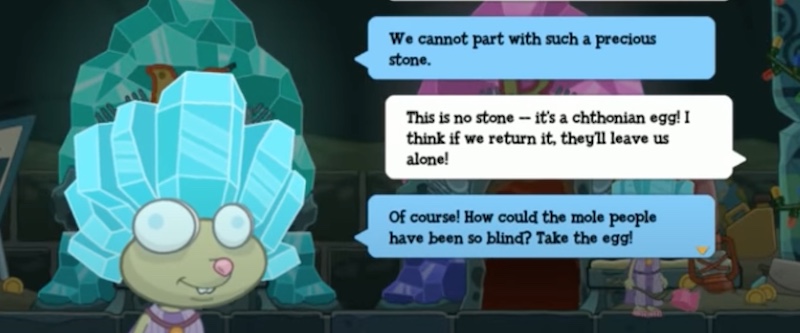
I also have to call out the work a lot of the other writers did. Max Brallier did a lot of writing for us — you know him now as the author of The Last Kids on Earth — and his dialogue always had a zippy quality to it that was a lot different than mine. And Patrick Kinney had an understated sense of humor that came through in some unique ways — something he wrote that always killed me was in Game Show Island, if you failed the Istanbul minigame the construction worker said something like “I guess I picked the wrong day to ask for a raise.” Also, in the course of making an island anybody on the team might come up with a good joke or a good line of dialogue that could make its way into the finished product.
What is your favorite memory working on the game?
In a general sense, I have really fond memories of all-day writing sessions with Jeff Kinney. We would just pitch ideas back and forth, trying to make each other laugh, and it was always so cool to see those ideas come to life. I also was constantly blown away by the work our designers and programmers did. It was so satisfying to write something and see it become even better than I could have pictured in the game. That happened all the time.
More specifically, Poptropica enabled me to accomplish my lifelong dream of walking into a bookstore and seeing a book with my name on the cover. I’m not sure if anything could top that.
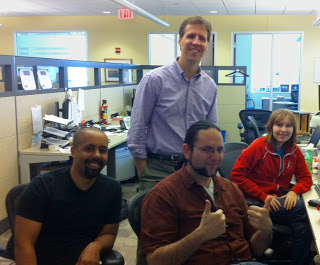
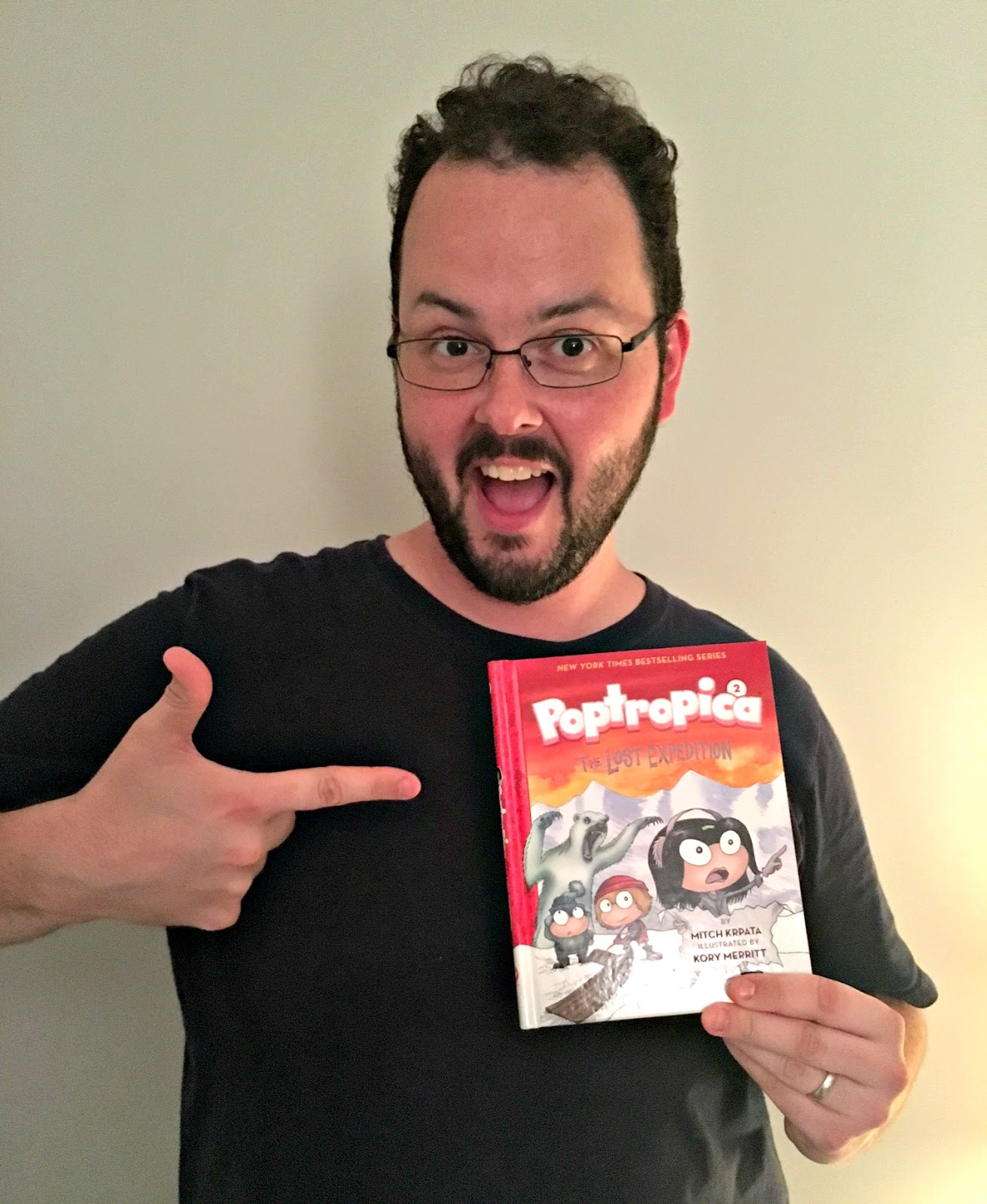
Who was your favorite character in the game? (aside from Captain Crawfish, of course)
I really enjoyed writing characters who were completely full of themselves, like the former child star in Back Lot pretending fans were still hounding him about some bad old movie (actually, a lot of the characters on Back Lot were full of themselves). I also liked writing characters who talked excitedly about things nobody else understood, like both the pharmacist on Monster Carnival and Hippocrates on Greek Sea Odyssey using all these archaic and antiquated medical terms. It was also a tremendous honor to see the words I wrote come out of the mouths of characters like Charlie Brown, Willy Wonka, and Greg Heffley.
As far as my actual favorite… Myron Van Buren is up there. Just your classic well-bred psychopath. Extremely fun to write.
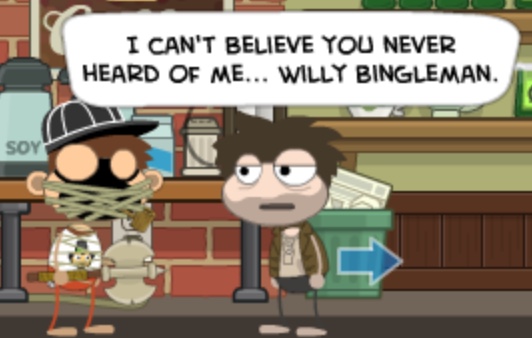
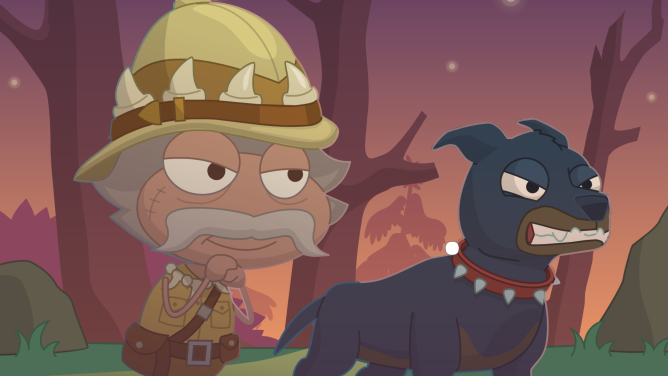
⚡️ Lightning Round ⚡️
Give us a bunch of references you hid among the islands, go!
I know that you have caught many of them. Here are some that might be more obscure.
Wild West: At least one of the town names is a reference to a movie called Blazing Saddles, which by the way is NOT a kids’ movie.
Vampire’s Curse: The vampire hunter, Cactus von Garlic, has a bunch of lines he’ll say at random as he’s chasing you around. A couple of them are taken from the games Altered Beast and Castlevania: Symphony of the Night.
Night Watch: The lady in the tanning bed is a reference to “Tan Mom,” a lady who had made the news at the time for bringing her 5-year-old to a tanning salon.
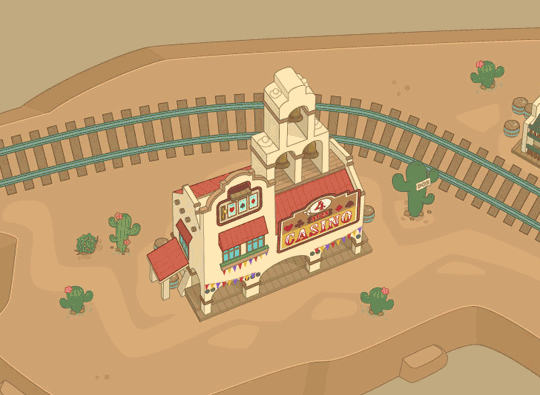
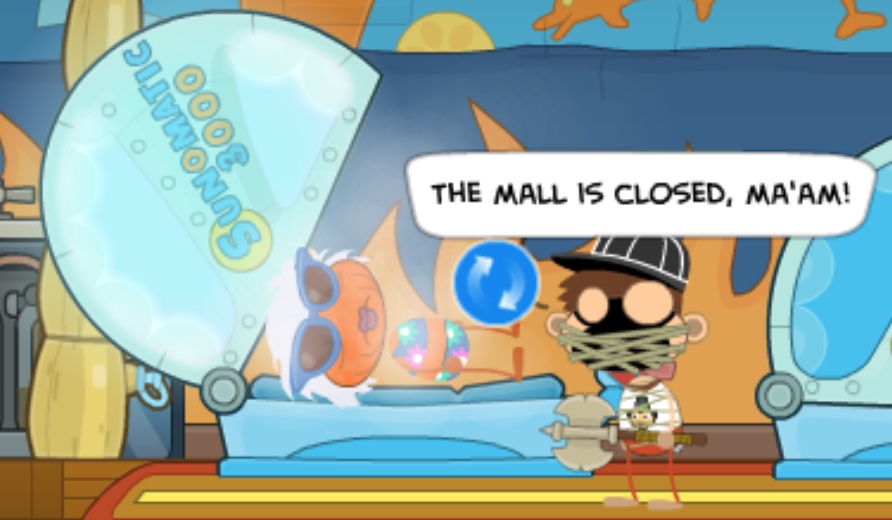
Back Lot: The screenwriter’s name “Goldie Millman” is an homage to a real screenwriter named “William Goldman.”
Super Villain: A lot of people have noted that the name of the prison is an anagram of “nowhere,” but it’s taken from the name of the prison in the movie Face/Off, which, uh, is also not for kids. The digging mini-game in Dr. Hare’s dream is inspired by Super Mario Bros 2.
Game Show: The ending sequence where you deprogram Holmes is inspired by 2001: A Space Odyssey. Using the heat vision goggles on the keypad is inspired by Splinter Cell. And when you’re looking at the electric panel, one of the switches is labeled “Mitch’s House.”
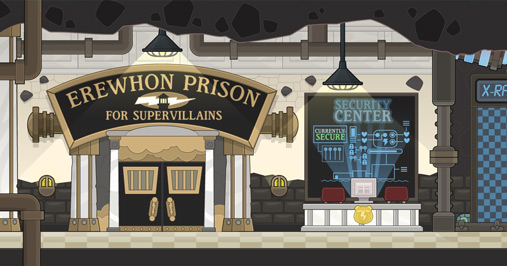
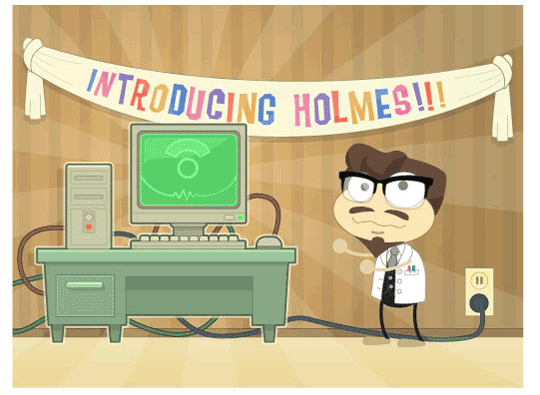
Mocktropica: The teacher (who looks like me) is teaching the students the poem “O Captain! My Captain!” which is a reference to the movie Dead Poets Society, except in the movie the kids buy into it and the kids on Poptropica don’t. The name of the school, Ephraim University, is a reference to the fact that many of the staff were located in Logan, Utah, the home of Utah State University and a large Mormon population. The bonus quest, in particular the character of Mark Hertz and his cryptic final email, are a parody of the movie Apocalypse Now. That one’s a kids’ movie. Wait, no, it’s extremely inappropriate for kids.
Survival: The keycode in episode 4, “0451,” is used in many video games such as Deus Ex, System Shock, and BioShock. Also, using the “tainted meat” to put the dog to sleep is inspired by The Secret of Monkey Island.
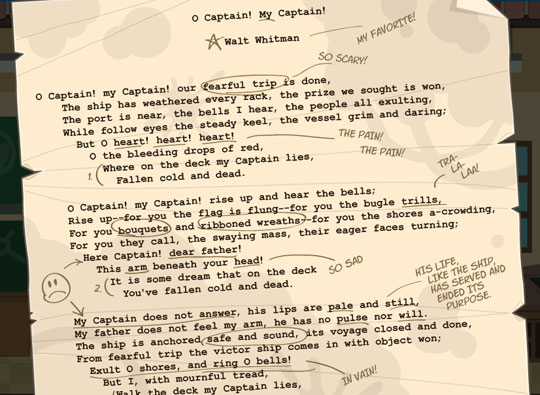
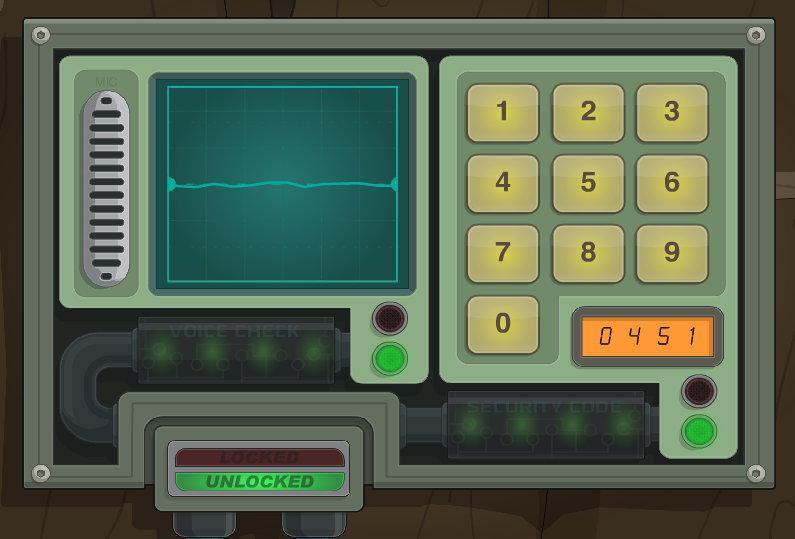
PoptropiCon: Omegon is parody of Ultron in name only, because that movie was out around that time, but his character is more inspired by “The King in Yellow,” a short story by Robert Chambers. The dialogue exchange where he says “I wear no mask” is lifted directly from the story. The premise of episode 3, in which we jump ahead in time to a colonized world, was inspired by the game Half-Life 2.
Virus Hunter: The gag with the “Pizza Delivery Company” van being a cover for the PDC was directly ripped off from a joke on the Simpsons. There’s a truck parked outside the Simpson’s house called “Flowers By Irene” that has FBI agents inside, and the second Marge notices it, the van takes off and is replaced by one that says “Pizza Delivery” with police officers inside.
The name of the company that Joe works for, GloboChem, was a reference to a joke on the TV show Mr. Show. Also, Virus Hunter was the culmination of my years-long quest to make a Super Metroid-style adventure on Poptropica. It didn’t go well, and I apologize.
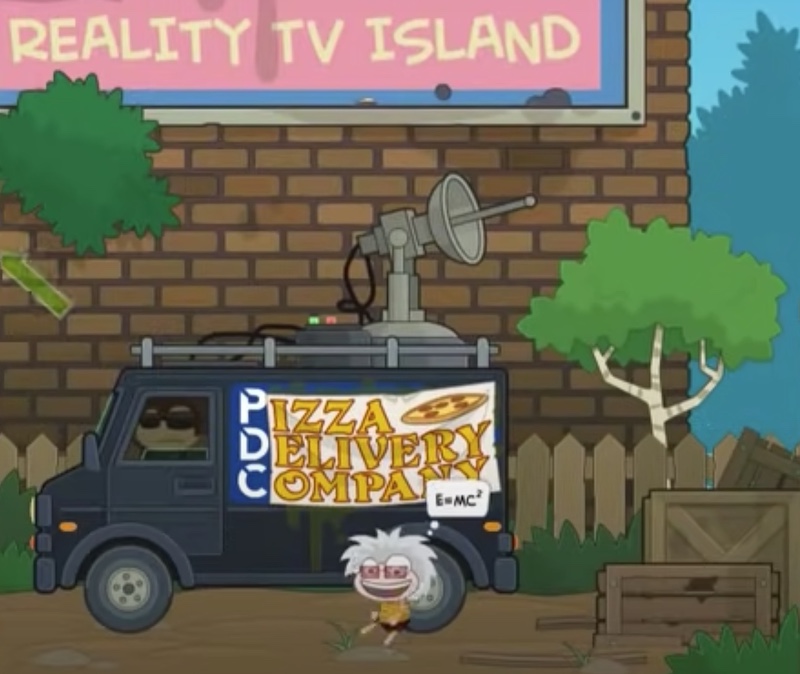
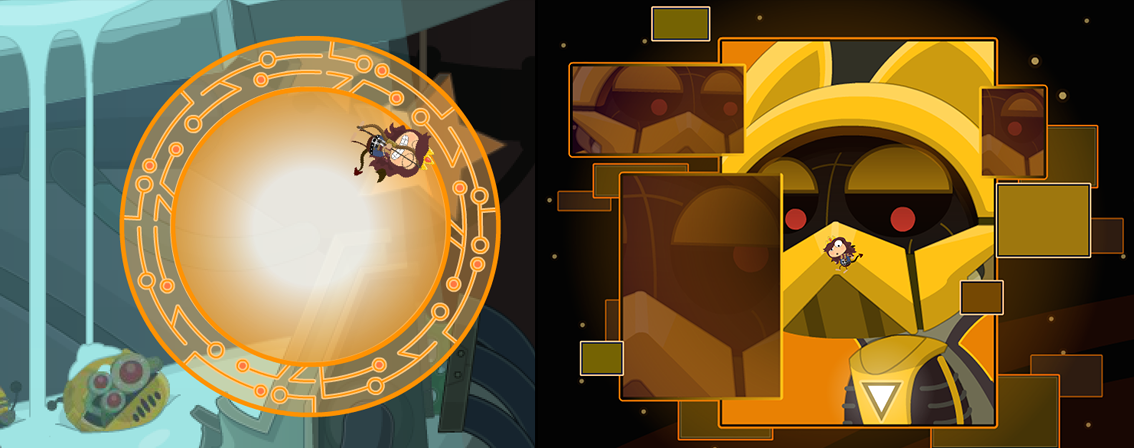
I’m sure I could go on and on. There are probably a lot of references that others slipped past me, too.
Thanks a ton to Mitch for taking us behind the scenes of Poptropica! 💙
If you liked this, you may also enjoy other interviews with Mitch discussing Pop: an earlier one with the PHB, coverage of his appearance on a podcast, and one from the Pop Creators’ Blog. Or check out his Pop Portfolio of writing he’s done for the game. Thanks for popping by!
Castori honorem ~ Maryann/Smart Bubbles

gaaahhh look how they massacred my birb. before he even came out. execution overrides intent in every situation and i believe this is one of the clearer examples of it
Thanks Mitch for sharing, and Maryann for organizing this interview! This was a really interesting read, especially on creating stories for the medium, which explains the different directions in storytelling. Also loved the reference reveals!
It is so fun getting to know things about Poptropica! I wish Mitch a fantastic career ahead, as well as all the aspiring storytellers out there (Maryann)
Could Mitch ever come back? I hope so
Maybe if Poptropica is ever ready to take him on again! We don’t know the details, but we do know Pop initiated the departures of several longtime Pop Creators including Mitch in 2018.